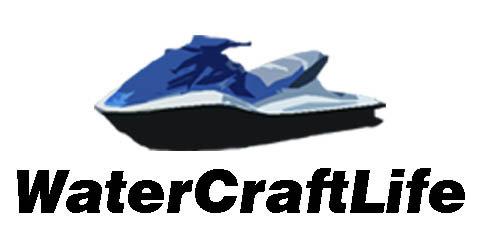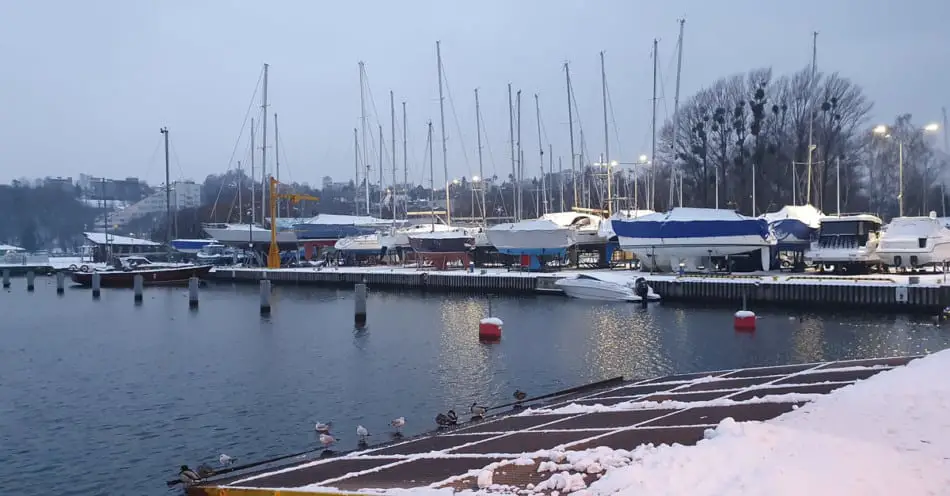Owning a boat comes at considerable fixed monthly costs. Docking fees at ports or marinas along your route are calculated based on the length of your boat or yacht. If you cannot trailer your boat back to storage on the hard after each outing, the only alternative is to dock it somewhere safe.
Regular docking slips in the US range from as little as $12/ft per year to $50/ft per year. Prime US locations and lakes can cost anywhere between $120/ft to $240/ft per year. Canada offers cheaper options, with prime Toronto dock locations, for example, currently running at $102/ft per year.
Several factors need to be considered when deciding where to keep your boat, such as protection against hurricanes and other storms. The distance of the dock to where you live is also important to facilitate ease of access and use. The safety and security of the intended docking location is key. Let’s look at these aspects more closely.
The Cost Of Docking All Year With Large Boats
Many boat owners prefer to have their vessels in the water all year round to make the boat access easy for maintenance, winter storage, and enjoying the boating season to the optimum. If you have a boat in the ocean, hauling out to store boats on the hard requires that the antifouling bottom treatment of the hull must be redone before splashing for the new season.
The cost of docking year-round is offset by not having to redo the hull treatment each season. Most boats can be winterized and docked in the security of a well-managed marina to ensure that they are safe from storms and are regularly inspected and maintained.
Let’s take the example of a 36-foot boat that needs to be docked year-round versus the cost of hauling out, storage on the hard, and redoing the antifouling on the hull. The cost for year-round docking would range from $1800 ($50 x 36 ft) to $8,640 ($240 x 36 ft).
Hauling out your 36-foot sailboat costs on average $26 per foot, resulting in a once-off cost of $936. The additional cost of storing the sailboat on the hard for the winter season adds $20 to $50 per foot. A 36-foot sailboat will cost about $720 to store on the hard for the off-season. From these costs, it is clear that hauling out and storage on the hard is as expensive as being docked year-round at good marinas.
Look for the best year-round docking solution to suit your needs. Choose a marina that offers good docking rates and other value-added services and access to purchasing materials for boat maintenance or getting hold of good contractors. The docking location must also be cleared with your insurance company as they have vast experience as to the risks of all locations.
The Costs of Docking a boat all year in Freshwater with smaller boats
If you have a smaller boat, you are in luck. You can choose to leave it in the water, or you can pull it out.
You may have space at your house, or you may have a storage place to store your boat. We have checked around, and for a 24′ boat, it will cost approximately $4,000-6,000 to dock it for the year. If you are in the north, that year may be pretty short consisting of only 4 months, but some marinas will let you store your boat all year for the same cost. It is worth the ask especially if you are into winter boating.
How To Manage Your Docking Risks for Year around Docking?
Docking your boat in the safety and protection of a marina during the winter, storm, or hurricane season is a wise choice. Docking the boat at a marina that offers seasonal docking at reasonable rates is less expensive than hauling out and storing the boat on the hard. During the boating season, less costly alternatives to docking in a marina is available.
You can anchor the boat in a sheltered mooring field at little cost. Care should be taken to ensure that the boat is protected from theft and vandalism. Many seasonal cruisers and full-time live-aboard sailors spend most of their time on passage or in secure anchorages and mooring fields.
Applying a good quality ablative antifouling treatment to the hull of your boat requires the boat to be used for the organic buildup to be washed off the hull by the friction of the hull moving through the water. If the boat is not used often enough, the bottom treatments will deteriorate faster and require mechanical removal.
If the boat is docked during winter, all the rigging and sails (if a sailboat) should be removed to prevent the deterioration caused by UV exposure and algae growth on sails and ropes. All electrical systems on the boat should be removed or unplugged during long-term docking to prevent damage due to lightning storms.
If you have shielded the windows from UV intrusion, the dark and damp interior will be the ideal place for black mold and other bacterial growths to flourish. You will require shore power to run a dehumidifier and heater inside the cabin. Keeping the air clean and dry will prevent the growth of mold.
There are many potential sources of water leaks from above and below the boat. Leaking windows hatches and vents can cause significant damage during three-month storage. The sea-cocks should all be closed and monitored that they are not leaking.
A bilge level alarm and a humidity alarm should be set up to monitor the conditions in the boat during storage. Alarms must be reported to the marina management for inspection and to correct any failure or leaks.
A boat left in a remote mooring field is a prime target for thieves to raid and strip of all valuables. The security at a marina needs to be good and not allow unauthorized access. An onboard security system linked to shore power and an alert to you and the marina management is a good idea.
Conclusion
Docking in a well-priced marina that provides good security service and access to maintenance materials and expert services is often more cost-effective than the alternative of hauling out and storage on the hard. It would be best if you looked for long-term docking solutions before buying your boat, allowing you to make an informed decision.
A marina close to home will ensure that you can get optimal use of your boat and enjoy the season to the full. A long-term docking agreement can also be advantageous for keeping your boat in the water during winter. The cost for annual docking in the US is based on the boat’s length, and prices range between $12 per foot to $50 per foot per annum.

